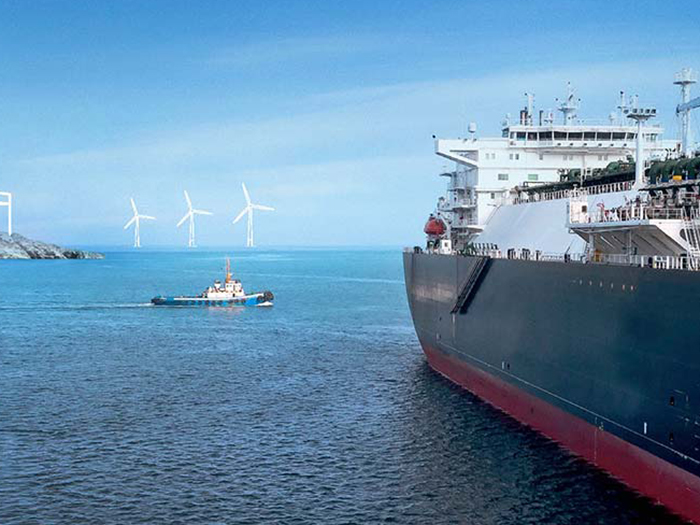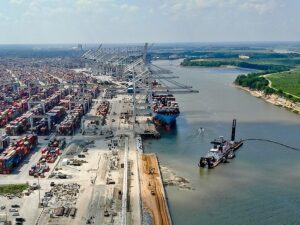
DNV GL sees fuel flexibility as key to shipping decarbonization
Written by Nick Blenkey
Image: DNV GL
A new edition of DNV GL’s Maritime Forecast to 2050 released at London International Shipping Week 2019 focuses on the challenge of reducing the carbon intensity of the global fleet to meet the ambitious targets set by the IMO’s greenhouse gas reduction (GHG) strategy.
“Existing technology can deliver the future we desire – including meeting the 1.5°C target set out in the Paris Agreement,” said Remi Eriksen, Group President and CEO of DNV GL. “So far, support for the energy transition has been too sporadic. We need a broad and coordinated policy agenda that supports new technologies as they emerge and sustains that support through the build-out phase.”
This year’s Maritime Forecast examines how the world fleet measures up in terms of decarbonization and looks at different strategies and pathways the industry can take to reach this goal.
The Maritime Forecast to 2050 analyses three regulatory scenarios (continuing under current policies, regulations becoming gradually stricter, or very strict regulations introduced towards the end of the 2050 deadline) and how these could affect the transition to low and carbon neutral fuels. Improvements in general energy efficiency in on-board operations is also included as an essential part of reducing emissions.
“One of the key components to meet the decarbonization challenge is fuel flexibility, as the fuels of today may not be the fuels of tomorrow,” said Knut Ørbeck-Nilssen, CEO of DNV GL – Maritime. “This means having a picture of the entire fuel ecosystem is vital, as owners, operators, and the industry itself will have a much tougher time adapting to a low-carbon future if they are locked into a single choice.”
Fuel flexibility and technologies to bridge changing fuel usage have been identified in the Forecast as essential strategies for both individual owners and the shipping industry to adapt to the energy transition and prepare for a low carbon future. In the deep-sea segment especially, dual-fuel solutions and alternative fuel “ready” solutions could smooth this transition, by laying the groundwork for a future retrofit. Combined with bridging technologies such as adaptable storage tanks, onboard systems and shore-side fuel infrastructure, this could give the industry more options as new fuels and technologies emerge.
“Ships built today will have to compete with vessels coming onto the market in five, ten or 15 years’ time, and must consider future standards to remain competitive,” said Knut Ørbeck-Nilssen. “Considering the uncertain future that lies ahead, failing to be future-proof in the newbuilding phase could lead to that asset being stranded in the not so distant future. In addition, CO2 emissions could become an important rate differentiator and we have already seen forward-looking charterers start down this road.”
The Forecast shows that the uptake of low-carbon and carbon-neutral fuels is essential to meeting IMO GHG goals, with carbon-neutral fuels having to supply 30–40% of the global fleet’s total energy by 2050.
Under different regulatory pathways, however, the model predicts that a variety of fuels could come to the fore. In all of the pathways, liquefied methane (from both fossil and non-fossil sources) provides a large part (40–80%) of the fuel mix at 2050.
The Forecast also suggests that in the deep-sea sector, ammonia, biodiesel, liquid biogas and electrofuels are promising carbon neutral options, with battery, hybrid, and hydrogen solutions being potential options for the short-sea segment.
.
You can download the full Maritime Forecast to 2050 HERE




